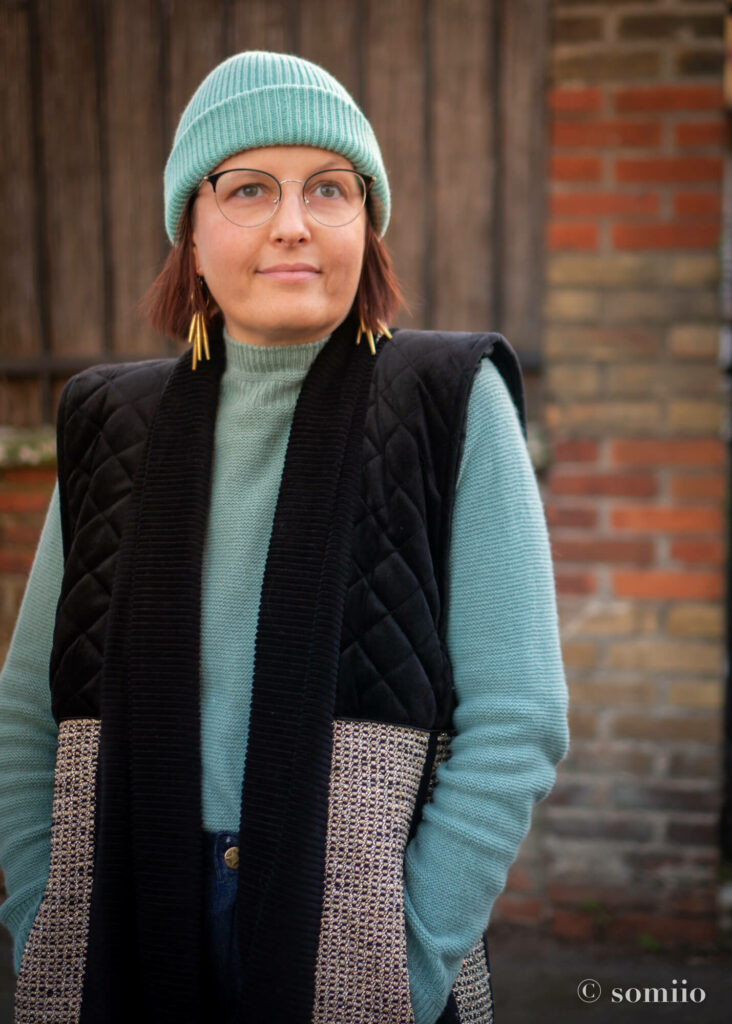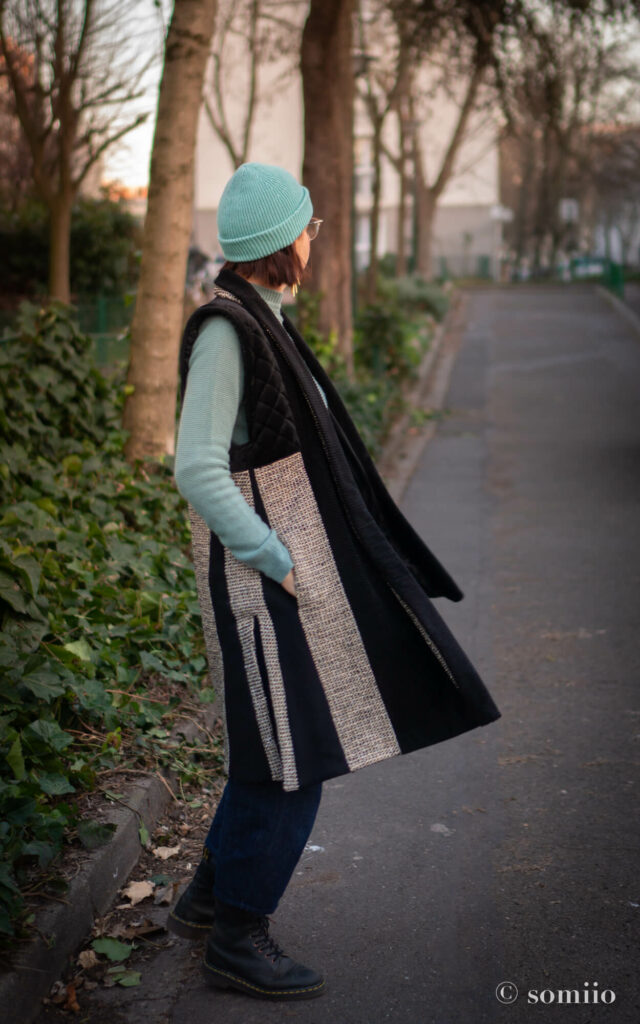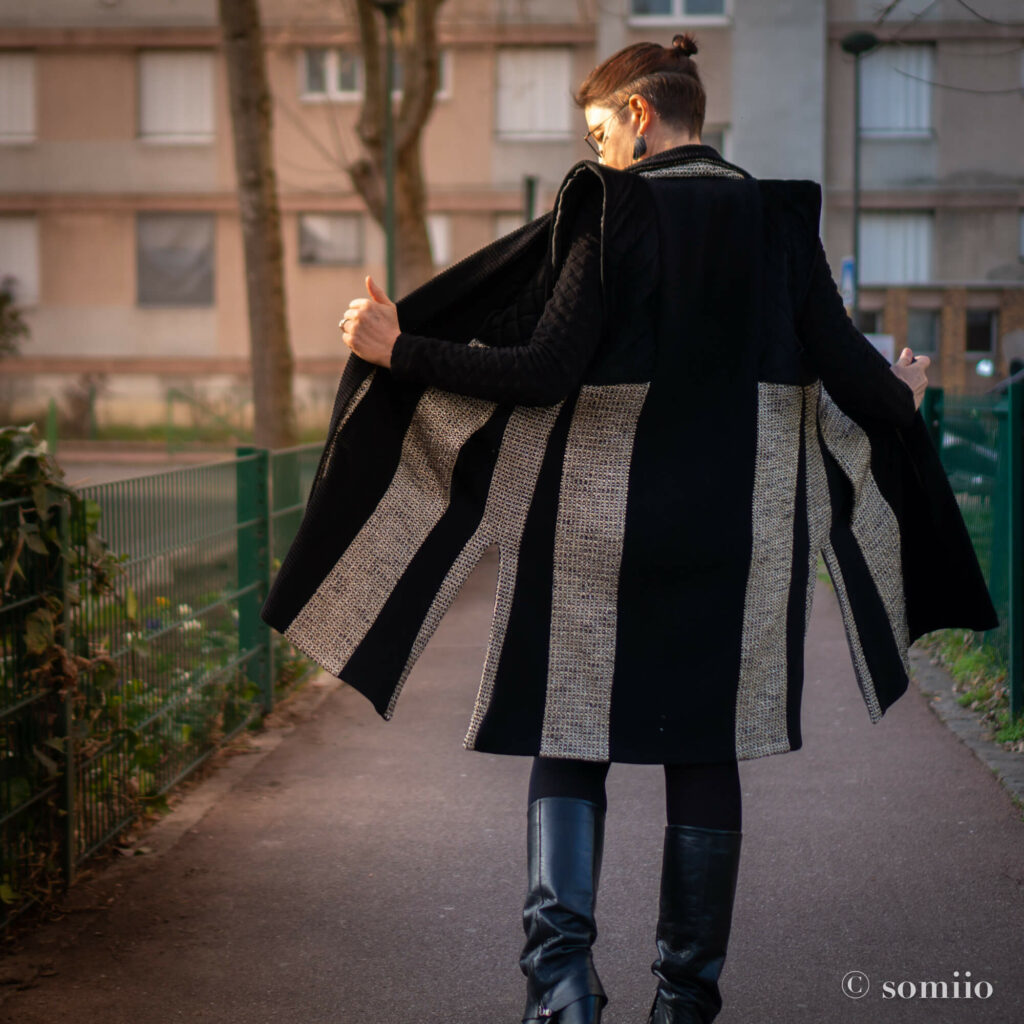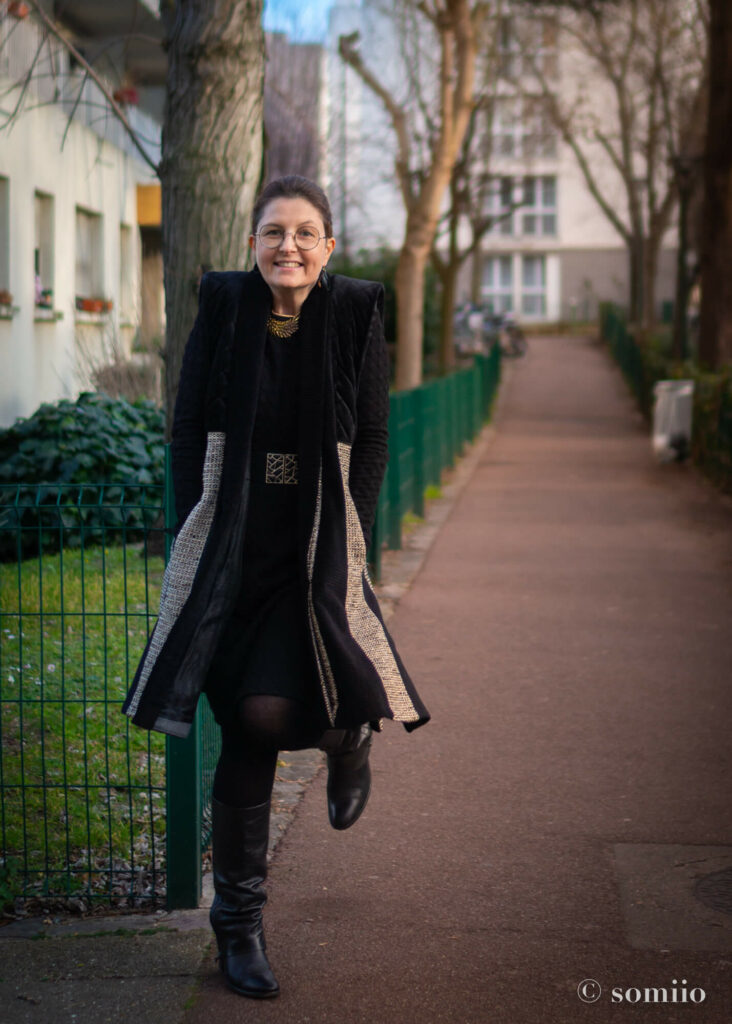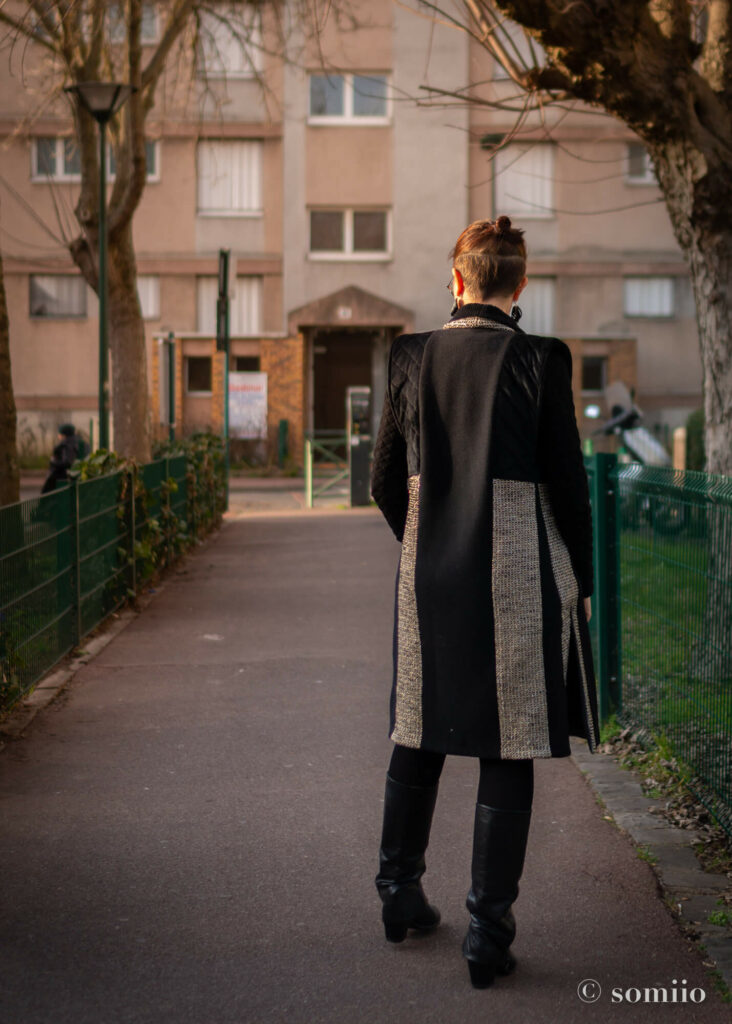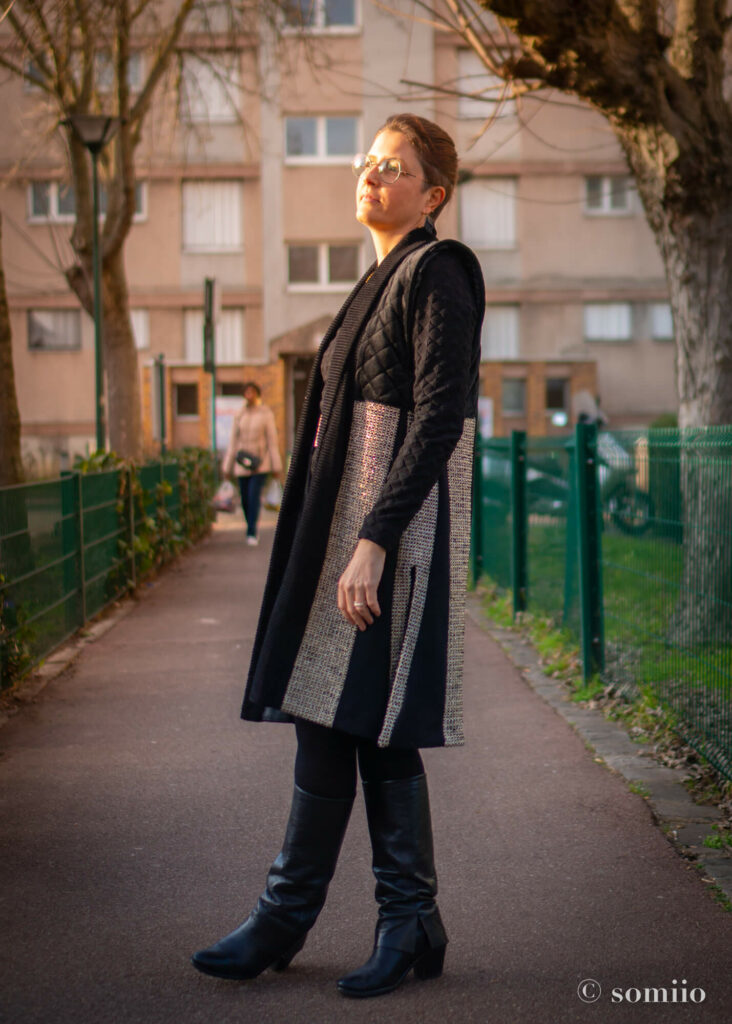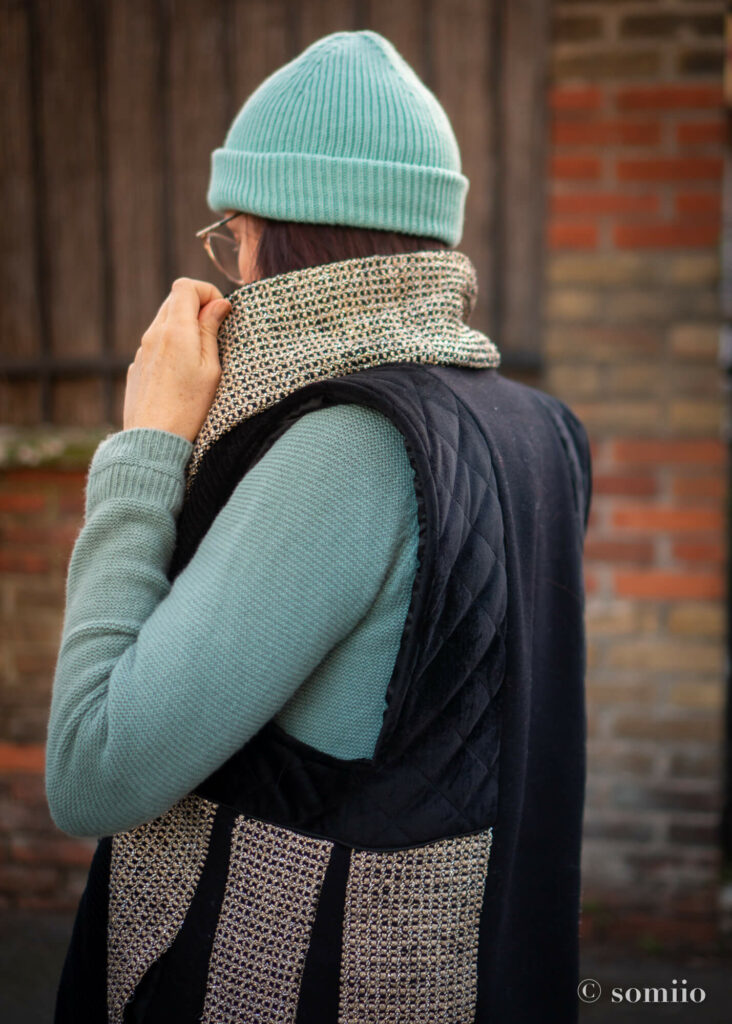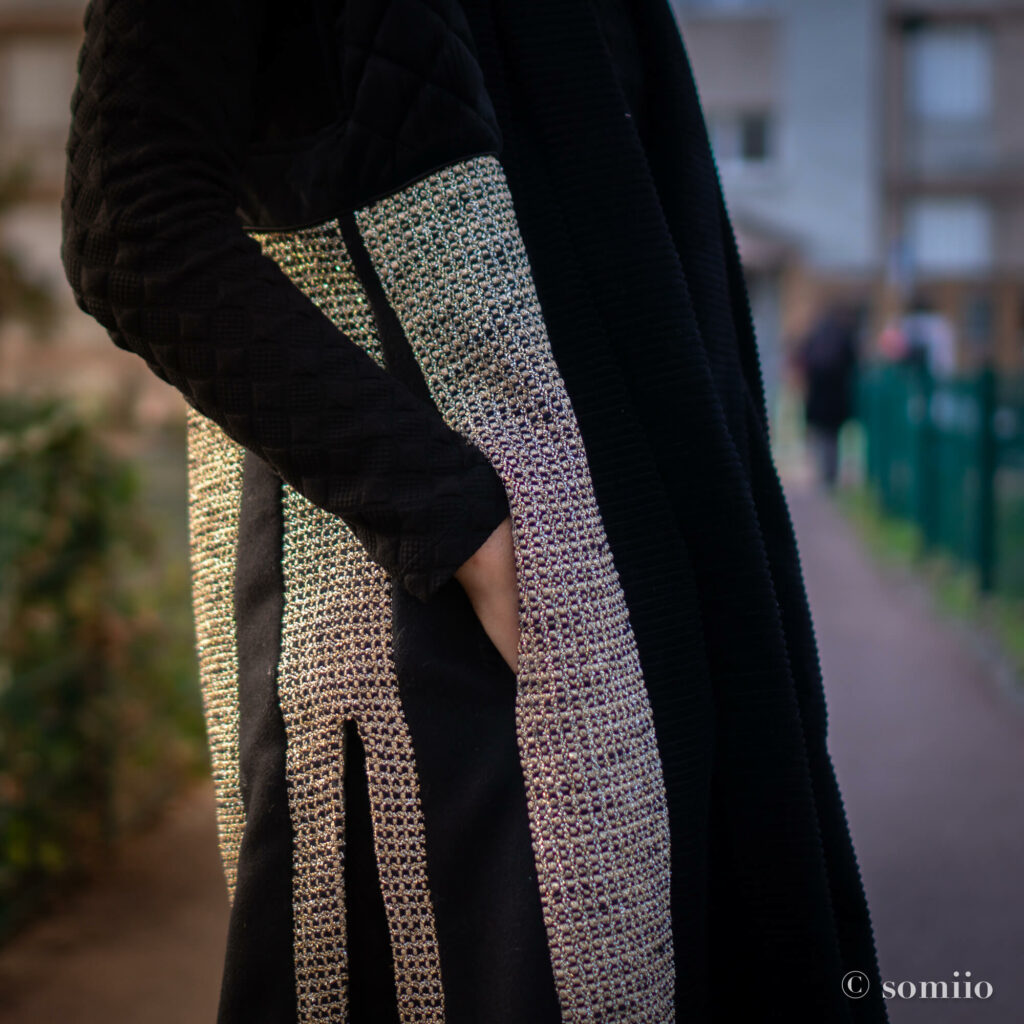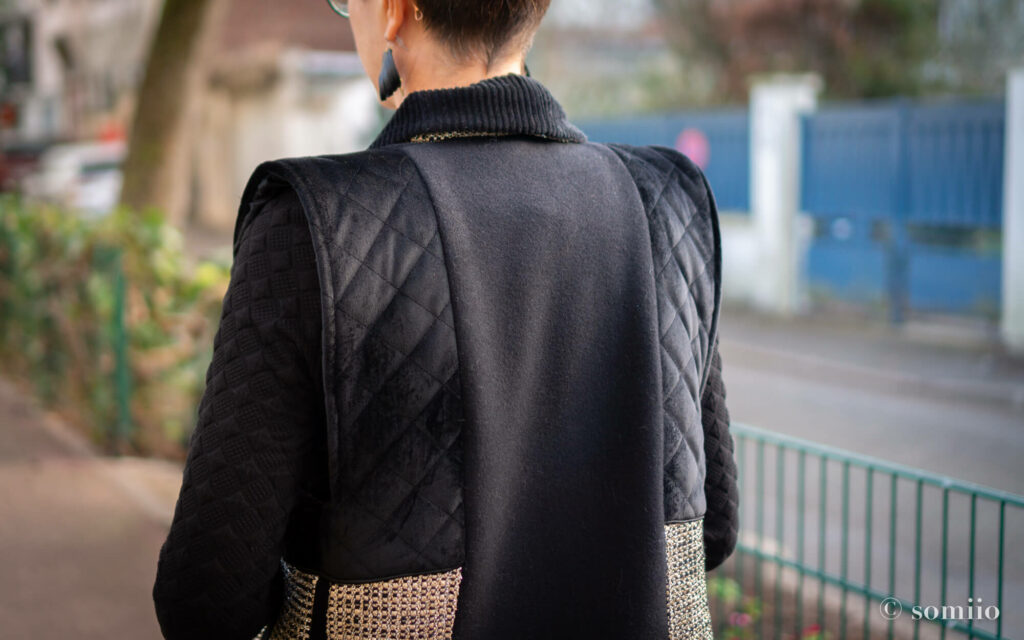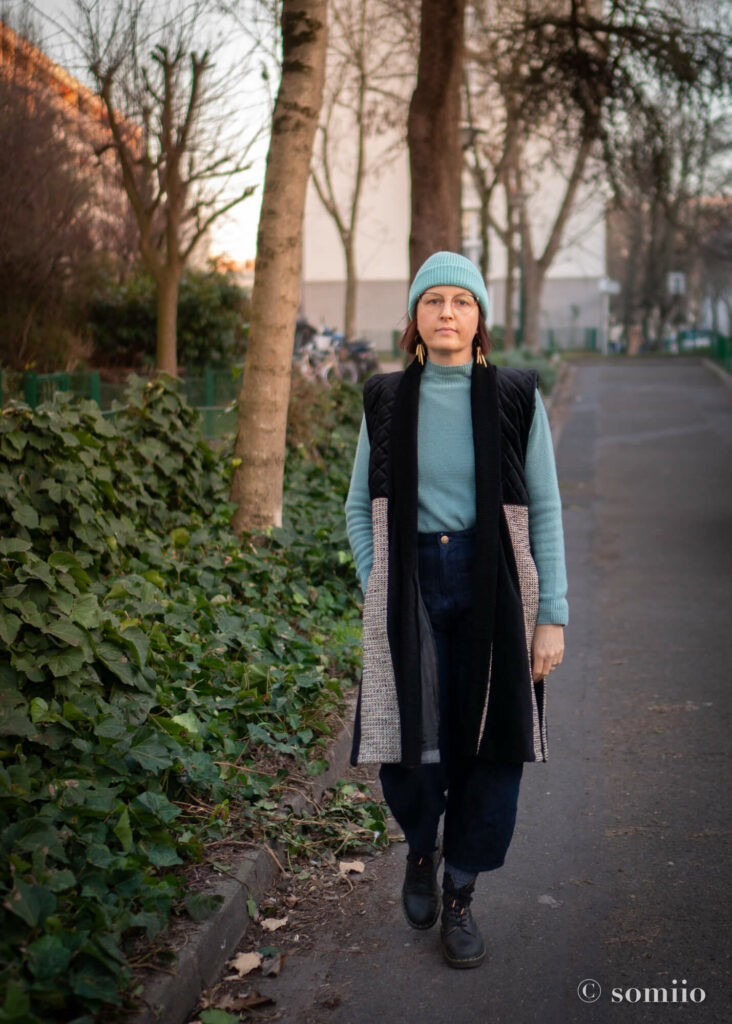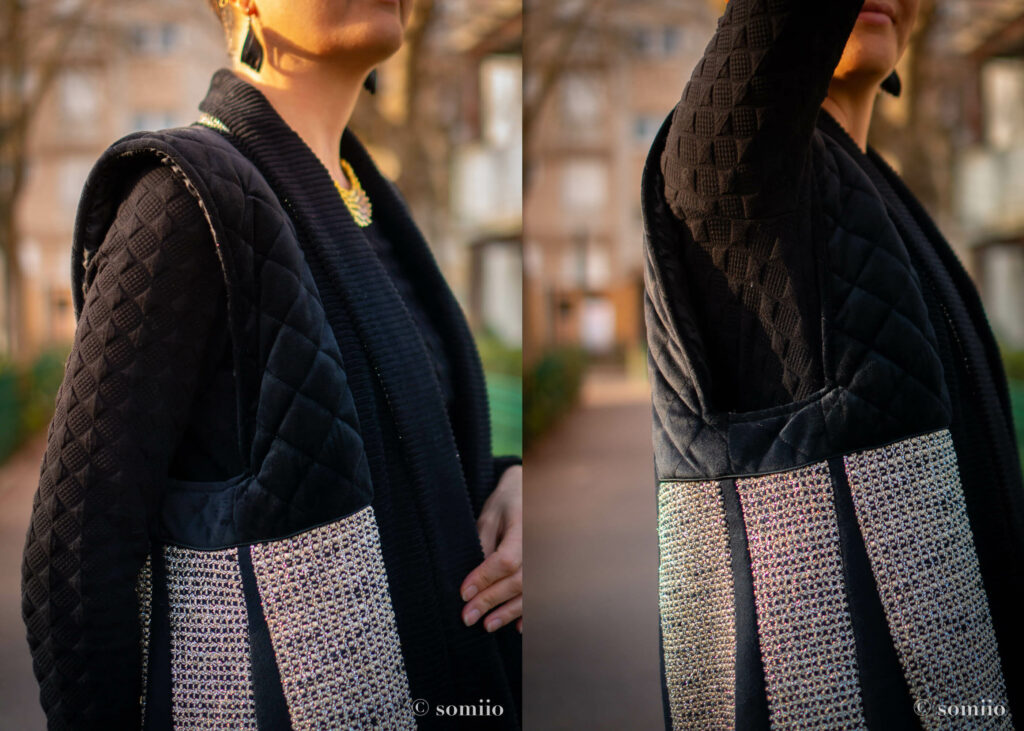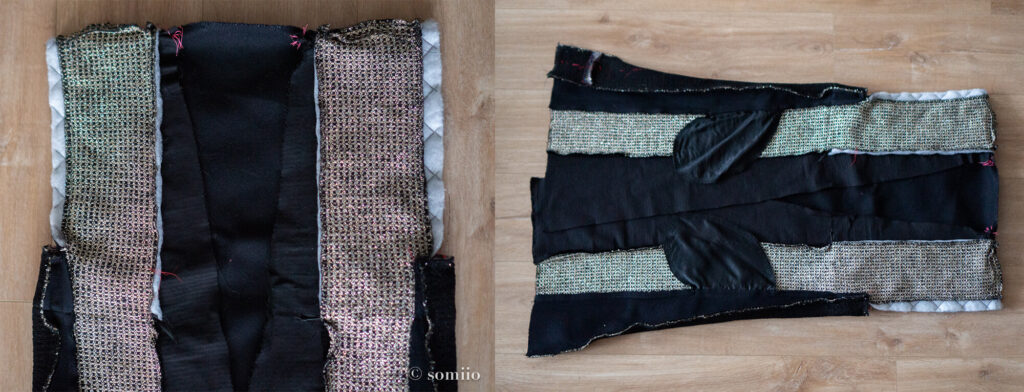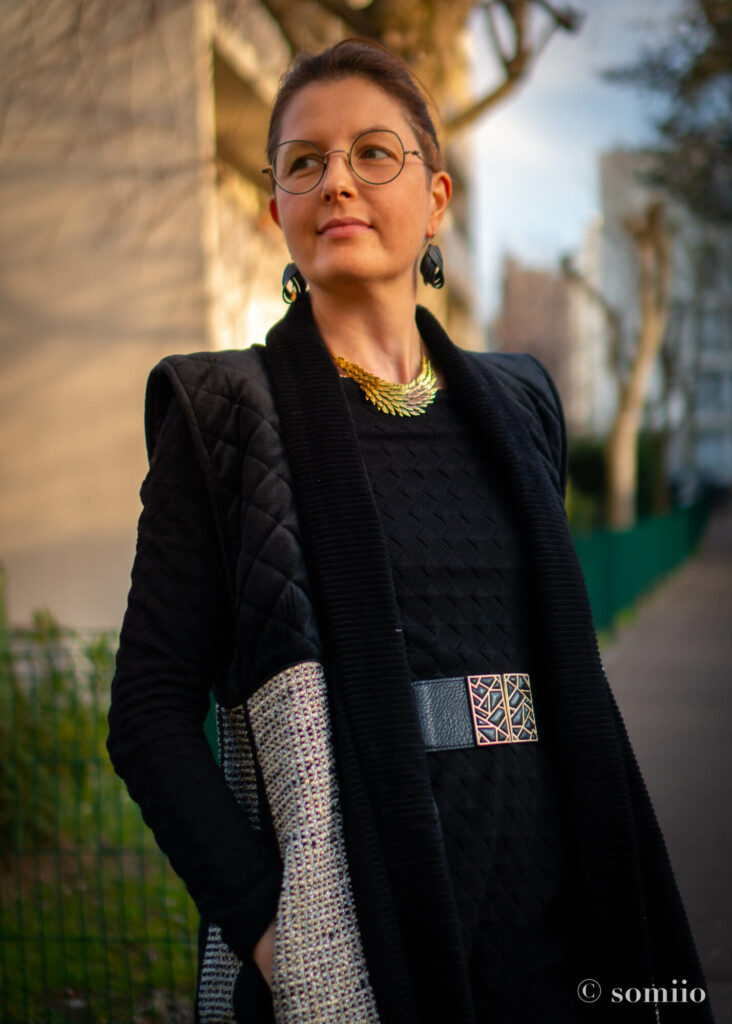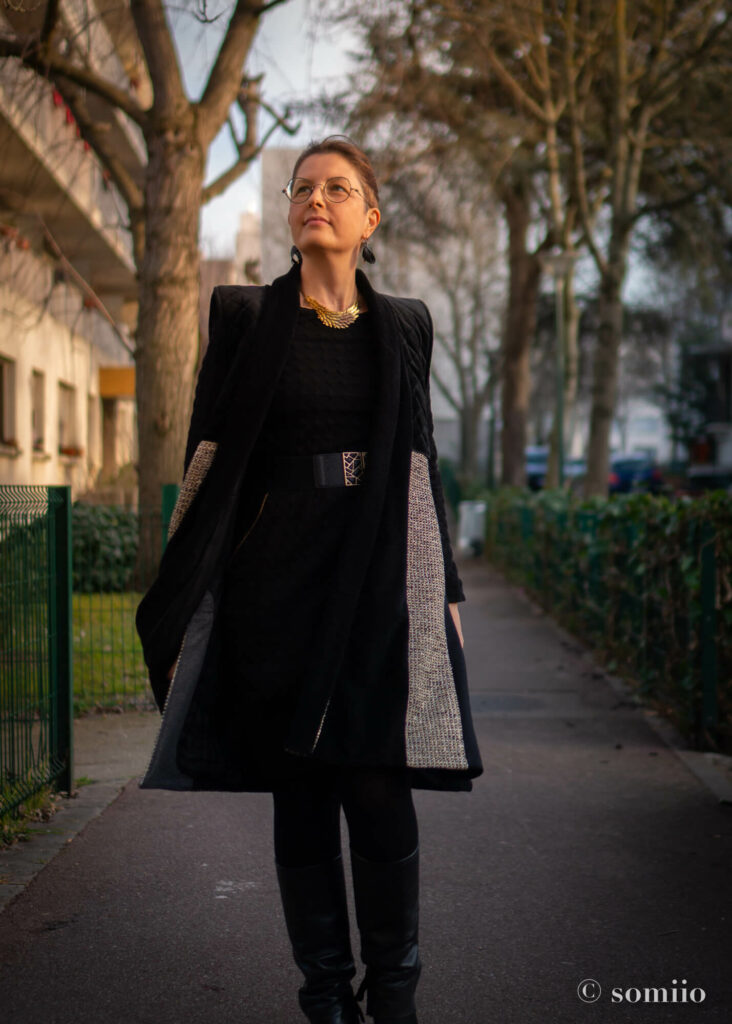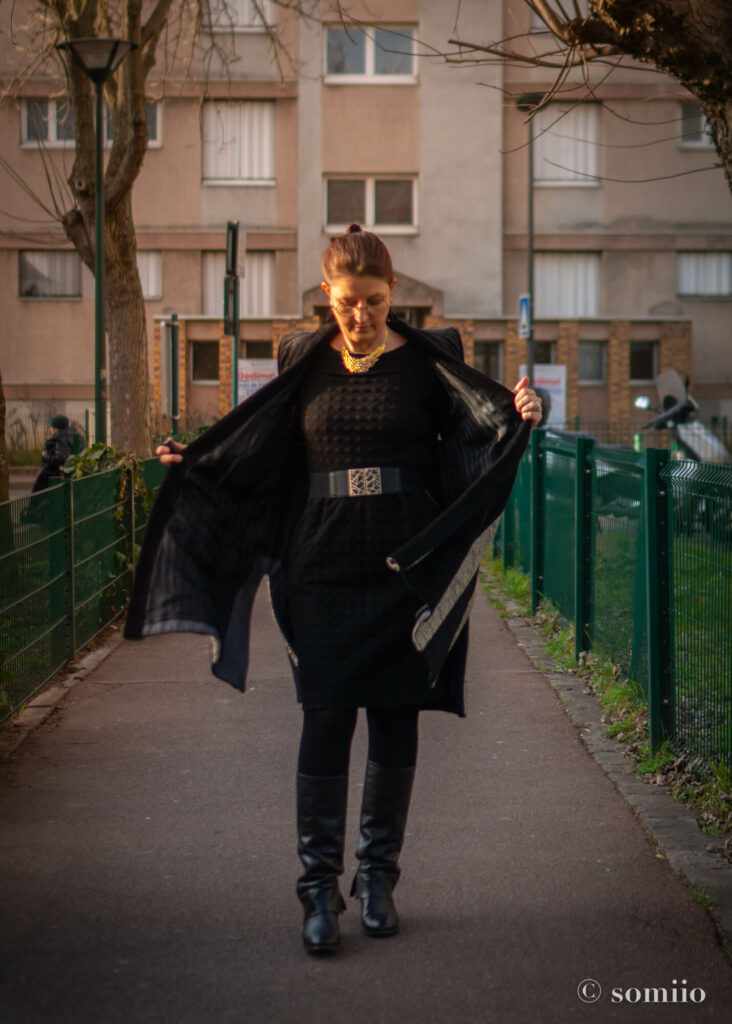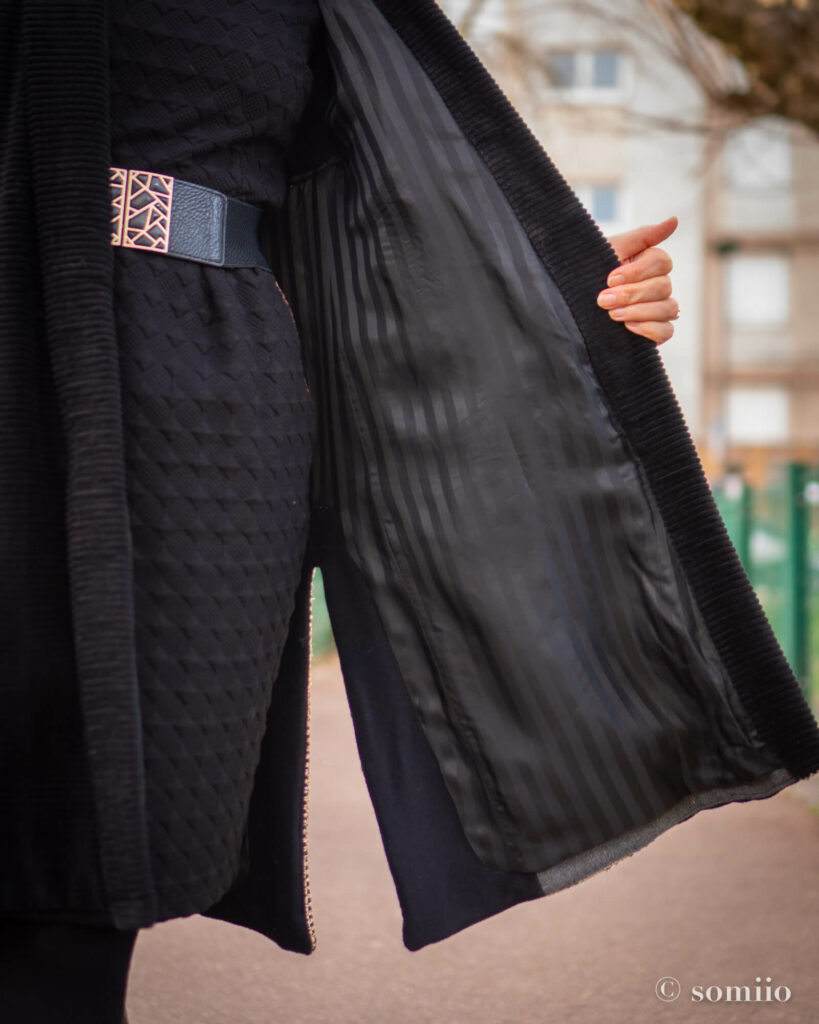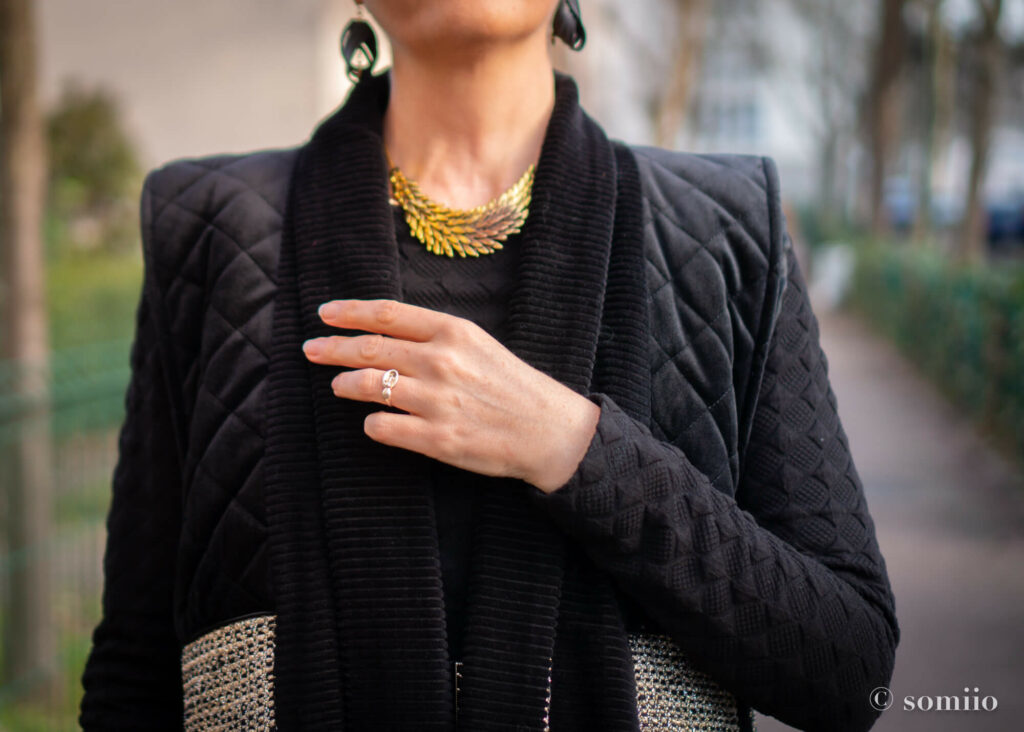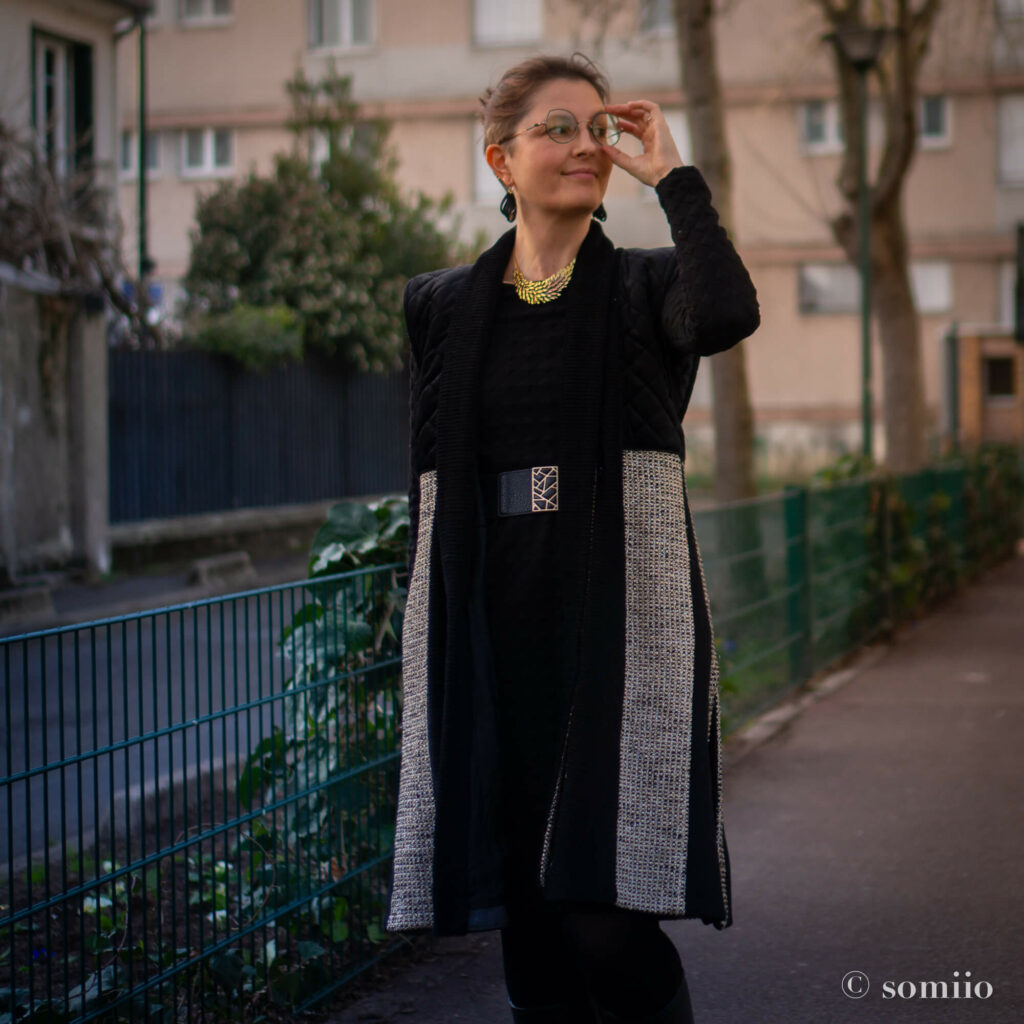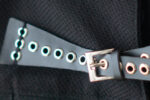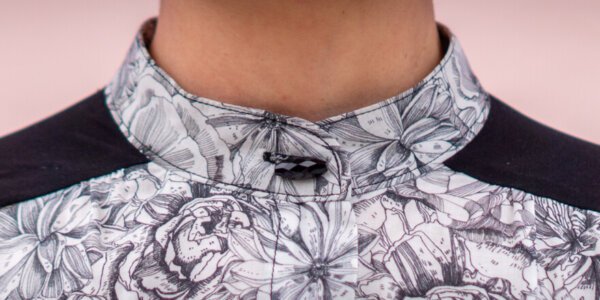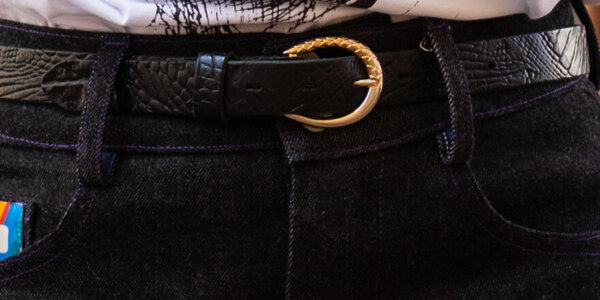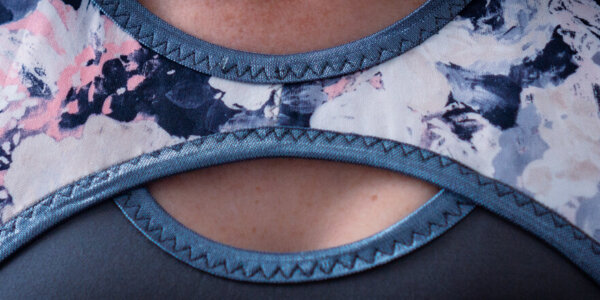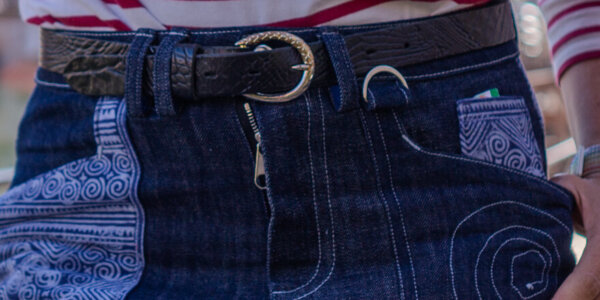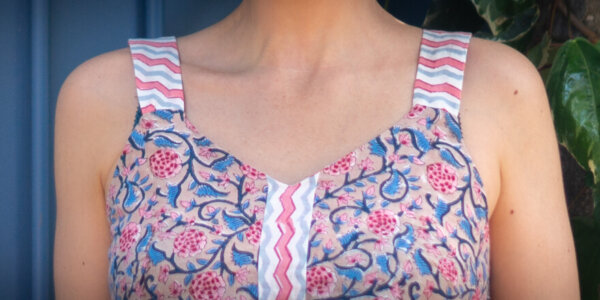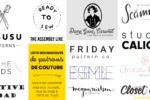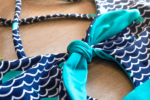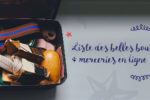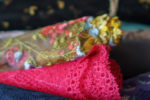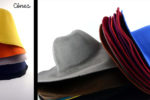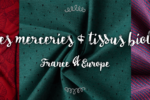{:fr}Tibetan Panel Coat haute couture (Folkwear #118){:}{:gb}Tibetan Panel Coat haute couture (Folkwear pattern){:}
{:fr}
J’ai acheté le Tibetan Panel Coat en octobre, lors d’une promo chez Folkwear. C’est une marque originale avec des modèles qui sortent du train-train. Je la suis depuis longtemps mais ça n’est que depuis 1 an environ que Folkwear a pris plus résolument le virage du PDF.
Et comme j’avais déjà une sérieuse envie de veste ou gilet sans manche… bon bah, alignement des planètes tout ça.
 |
Hop, le 1e projet coché de ma liste de projets couture 2023 ! |
| ITEM | BOUTIQUE | QUANTITÉ | PRIX |
| Patron du Tibetan Panel Coat | Folkwear | 1 | 16,00 € |
| Drap de laine (chutes de la shacket Ingrid) | Stock | 1 m | 0 € |
| Velours côtelé (chutes de la salopette Turia) | Stock | 0,50 m | 0 € |
| Velours matelassé (chutes de la veste Bernadette & banane Bauchladen) | Stock | 0, et 50 m | 0 € |
| Jacquard doré haute couture | La Réserve des Arts | 1 m | 9,80 € |
| Doublure | Tissus de Rêve | 1 m | 3,90 € |
| Thermocollant | Fil 2000 | 1 | 2,00 € |
| Fil | Stock | 1 | 0 € |
| Total | 31,70 € |
Le patron du Tibetan Panel Coat
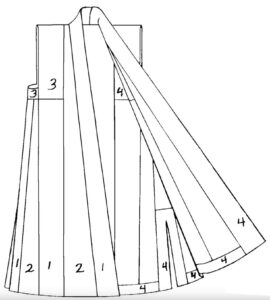
Le Tibetan Panel Coat est un patron de manteau ou veste sans manches traditionnel tibétain avec une bande d’encolure qui se prolonge jusqu’à l’ourlet.
Il est constitué de panneaux de tissus contrastés ce qui permet de jouer avec au moins 4 tissus différents + la doublure (comme on le voit sur le schéma)… ou éventuellement des chutes de tissu.
Folkwear est une marque de patrons de couture basés sur d’authentiques vêtements vintage et folkloriques du monde entier. De ce fait, le patronage tend vers une authenticité qui ne correspond pas toujours aux méthodes modernes (et pratiques !) de couture.
Le patron inclut ainsi un livret complet sur l’histoire de ce vêtement, des explications sur la création du motif estampé traditionnel ainsi que des notes et pièces de patron pour les tisseur·ses à la main qui voudraient tisser le propre tissu avant de le coudre (y a plus qu’à tondre soi-même son mouton et la boucle est quasiment bouclée).
Des instructions et pièces de patron sont aussi fournies pour la réalisation d’une doublure optionnelle simple. Cette doublure élimine la nécessité de finir les coutures.
Le patron en anglais uniquement ne comprend que 3 tailles S-M-L et aucun tableau de mensurations… Donc pouf-pouf.
La planche de patron est disponible en A4 (60 pages !!! Arg.) mais heureusement aussi en version A0, en 2 planches quand même.
\(º □ º l|l)/
J’ai profité de mon passage au CSF pour faire imprimer le patron chez Pattern For You qui avait un stand et un traceur sur place. Pratique et presque pas trop cher : 9€.
La (pénible) couture du Tibetan Panel Coat
La couture de ce Tibetan Panel Coat n’a pas vraiment été tranquillou-bilou. D’une part à cause des mes tissus mais en grosse partie aussi à cause du patron (enfin il me semble).
Mon cerveau a sérieusement carburé pour résoudre le puzzle et ma tendinite du coude est repartie de plus belle à force de tirer des épaisseurs de tissu sous le pied de biche.
Déjà, vu l’ampleur du Tibetan Panel Coat, je n’ai pas vraiment fait pouf-pouf et je suis partie sur une taille S en enlevant 25 cm de longueur.
Ensuite pour ne pas perdre l’ampleur du bas et la fente sur le côté, j’ai redessiné les pièces de patron en coupant et re-scotchant.
Puis j’ai refais un peu de Tetris et de cogitation pour choisir quel tissu irait où. Enfin, surtout lequel rentrait dans quelles pièces.
Et j’ai aussi ajouté des poches dans la couture entre les pièces C du devant et D parce que franchement… une veste sans poches. N’importe quoi.
Le gilet
Quand on voit le schéma et les photos, on pourrait croire que les pièces s’arrêtent au niveaux du « gilet » en velours. Mais point du tout.
Le gilet est en fait prévu pour se superposer sur les panneaux qui montent jusqu’à l’épaule. Le « gilet » est donc facultatif. Même si ce n’est mentionné nulle part.
Telles quelles, les instructions prévoient de superposer le gilet en faisant des rentrés qui doivent être cousu à la main.
En conséquence, sur certaines versions d’autres couturières, j’ai pu constater un décalage entre les bords du gilet et les coutures entre les panneaux… que je trouvais assez curieux avant de voir les instructions de montage.
Du coup, j’ai changé l’ordre d’assemblage pour inclure les bords du gilet DANS les coutures des panneaux pour tout aligner pile-poil.
Et pour le bas, j’ai ajouté un passepoil pour finir mon bord rentré et j’ai cousu à la machine pour sécuriser toutes les épaisseurs.
Ce qui a marché sauf que je me suis aperçue d’un autre décalage sur l’emmanchure où mon gilet dépassait d’environ 2-3 cm.
Ouais, quand même… on est pas dans le petit décalage.
J’ai donc laissé ça comme ça, en attendant la doublure.
La doublure
Si la doublure est mentionnée comme optionnelle, je l’ai rapidement considérée comme indispensable vu mon fragile tissu jacquard haute couture doré.
Mais j’avais un léger souci à comprendre comment la doublure était censée s’assembler avec ou non avec les parementures.
Le patron est tout à fait obscur sur le sujet avec une mention « and/or » (« et/ou ») pour savoir si elle se coud avec ou sans les parementures. Or bien sûr, on patronne différemment une doublure si on doit prendre en compte les parementures ou non.
C’est là que je me suis sérieusement mise à comparer et mesurer toutes les pièces.
La réponse serait que les parementures et la doublure sont à utiliser séparément.
Mais aussi qu’il y a des problèmes de correspondance entre des repères, entre les pièces de doublure et les pièces principales ou encore sur les parementures avec des décalages, des angles différents…
Bien sûr, il est tout à fait possible que je n’ai pas compris les subtilités du patronage.
Dans le doute, j’ai redessiné toutes les pièces de doublure… et de parementure. Car oui, j’ai cousu les deux (quand je vous dis que je ne suis pas contrariante).
Encore une fois, vu la nature des tissus utilisés, c’était inévitable.
Enfin, un peu de thermocollant a aussi été impliqué dans ce projet, mais je ne sais plus où.
Conclusion
Je suis assez contente de moi sur ce projet même s’il n’est vraiment pas parfait.
Attention, je trouve mon Tibetan Panel Coat super classe et j’aime beaucoup le porter… mais les coins ne sont pas très carrés et le côté gauche vrille… mais peut-être que je soumettrai le problème à la talentueuse communauté Thread and Neddles à la fin du mois. Quelqu’une aura peut-être une idée.
Le jacquard est aussi très fragile. J’ai peur qu’il ne fasse pas long feu.
Cela dit, il est chaud (merci le lainage et le velours matelassé) et rempli donc parfaitement son contrat initial.
Bref, je le kiffe et, en dépit de son originalité, je le trouve plutôt facile à assortir à mes tenues, que ce soit des robes ou des pantalons.
Bon, je sens que je deviens de moins en moins structurée dans mon discours et un mot sur deux me reste sur le bout de la langue… je vais donc aller me coucher et je vous dis à la semaine prochaine !
{:}{:gb}
I bought the Tibetan Panel Coat pattern in October, during a promotion at Folkwear. It’s an interesting pattern brand with some very unique designs. I’ve been following it for a long time, but it’s only in the last year or so that Folkwear has taken the PDF step more resolutely.
And as I already had a serious desire for a sleeveless jacket or waistcoat… well, planets aligned.
 |
And voilà, the 1st project checked off my list of 2023 sewing projects! |
| ITEM | SHOP | QUANTITY | PRICE |
| Tibetan Panel Coat PDF pattern | Folkwear | 1 | 16,00 € |
| Black wool cloth (remnants from the Ingrid shacket) | Stock | 1 m | 0 € |
| Black corduroy (remnants from the Turia overalls) | Stock | 0,50 m | 0 € |
| Black quilted velvet (remnants from the Bernadette jacket & Bauchladen fanny pack) | Stock | 0, et 50 m | 0 € |
| Haute couture gold Jacquard | La Réserve des Arts | 1 m | 9,80 € |
| Lining | Tissus de Rêve | 1 m | 3,90 € |
| Interfacing | Fil 2000 | 1 | 2,00 € |
| Thread | Stock | 1 | 0 € |
| Total | 31,70 € |
The Tibetan Panel Coat pattern

The Tibetan Panel Coat is a traditional Tibetan sleeveless coat or jacket pattern with a neck band that extends to the hem.
It is made up of panels of contrasting fabrics which allows you to play with at least 4 different fabrics + the lining (as shown in the diagram)… or possibly fabric remnants.
Folkwear is a brand of sewing patterns based on authentic vintage and folk clothing from around the world. As a result, the pattern tends towards an authenticity that does not always correspond to modern (and practical!) sewing methods.
The pattern includes a full booklet on the history of the garment, explanations of how to create the traditional stamped pattern, and notes and pattern pieces for hand weavers who would like to weave their own fabric before sewing it (all you have to do is shear your own sheep and you’re done).
Instructions and pattern pieces are also provided for making an optional simple lining. This lining eliminates the need to finish the seams.
The pattern only includes 3 sizes S-M-L and no sizing chart… So eeny, meeny, miny, moe.
The pattern sheet is available in A4 (60 pages!!! Arg.) but fortunately also in A0 version, in 2 sheets though.
\(º □ º l|l)/
I took advantage of my visit to the CSF to have the pattern printed at Pattern For You who had a stand and a plotter on site. Convenient and almost not too expensive: 9€.
The (tedious) sewing of the Tibetan Panel Coat
The sewing of this Tibetan Panel Coat was not exactly easy peasy. Partly because of my fabrics, but mostly because of the pattern (or so it seems).
My brains were badly overworked trying to solve the puzzle and my elbow tendonitis was back in full swing from pulling layers of fabric under the presser foot.
First, considering the Tibetan Panel Coat’s fullness, I didn’t really do eeny, meeny, miny, moe and I went for a size S by removing 25 cm of length.
Next, in order not to lose the amplitude of the bottom and the slit on the side, I redesigned the pattern pieces by cutting and gluing.
Then I did a bit of Tetris and cogitation to choose which fabric would go where. Well, mostly which one would fit in which pieces.
And I also added pockets in the seam between the front C and D pieces because frankly… a jacket without pockets. Nonsense.
The upper waistcoat
When you see the diagram and the photos, you might think that the vertical panels stop at the velvet « waistcoat ». But they don’t.
The waistcoat is in fact intended to be overlaid on the panels that go up to the shoulder. The « waistcoat » is therefore optional. Although it is not mentioned anywhere.
As it is, the instructions call for the waistcoat to be layered with tuck-in seams that need to be sewn by hand.
As a result, on some of the other seamstresses’ versions, I could see a mismatch between the edges of the waistcoat and the seams between the panels… which I found quite curious before I saw the assembly instructions.
So I changed the order of assembly to include the edges of the waistcoat IN the seams of the panels to line everything up just right.
And for the bottom, I added a piping to finish my tucked in edge and machine sewed to secure all the layers.
Which worked except that I noticed another mismatch on the armhole where my waistcoat was sticking out by about 2-3 cm.
Yeah, still… it’s not a small discrepancy.
So I left it like that, waiting for the lining.
The lining
Although the lining is mentioned as optional, I quickly considered it essential given my fragile gold jacquard couture fabric.
But I had a slight problem understanding how and if the lining was supposed to go with or without the facings.
The pattern is quite obscure on the subject with a « and/or » to know if it sews with or without the facings. Of course, you draft a lining differently if you have to take the facings into account or not.
That’s when I seriously started to compare and measure all the pattern pieces.
Apparently, the answer is that the facings and the lining are to be used separately.
But also that there are matching problems between notches, between the lining pieces and the main pieces or even on the facings with discrepancies, different angles…
Of course, it is quite possible that I have not understood the subtleties of the pattern. I am not a professional pattern drafter.
When in doubt, I redrafted all the lining pieces… and the facing. Because yes, I did sew both ( when I tell you that I’m not being contrary).
Again, given the nature of the fabrics used, this was inevitable.
Finally, some fusible interfacing was also involved in this project, but I can’t remember where.
Conclusion
I’m quite happy with this project even if it’s far from perfect.
Mind you, I think my Tibetan Panel Coat is super chic and I really like wearing it… but the corners are not very square and the left side is twisted… but maybe I’ll submit the problem to the talented Thread and Neddles community at the end of the month. Maybe someone will have an idea.
The jacquard is also very fragile. I’m afraid it won’t last long.
That said, it is warm (thanks to the wool and quilted velvet) so it fulfils its original purpose perfectly.
In short, I love it and, despite its originality, I find it rather easy to match with my outfits, be it dresses or trousers.
Well, I feel like I’m becoming less and less structured in my speech and every other word is on the tip of my tongue… so I’m going to go to bed and I’ll see you next week!
{:}


